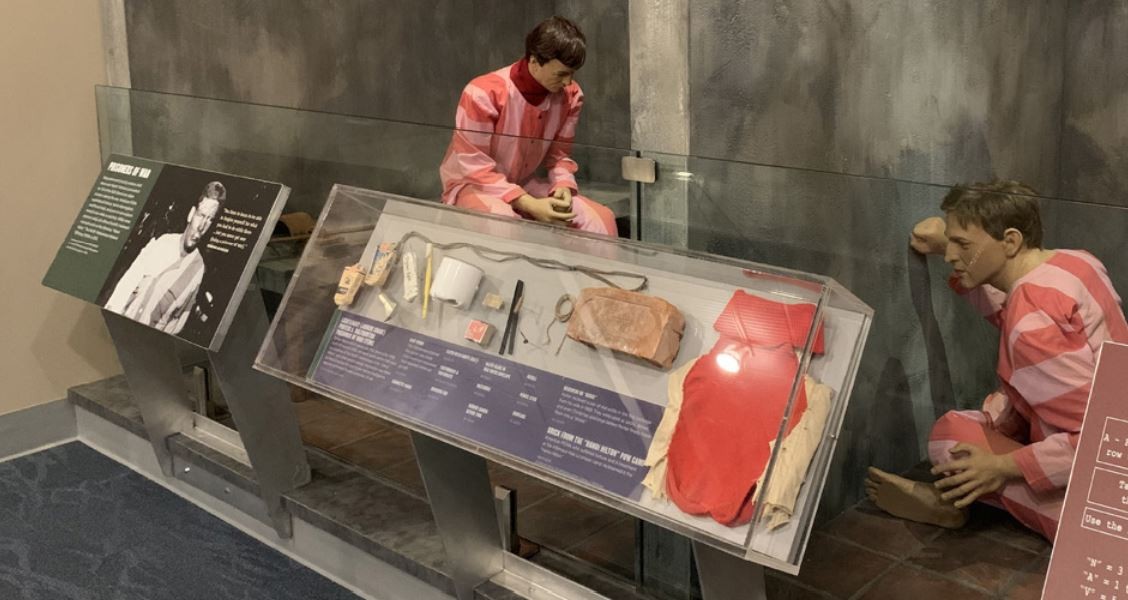Share
Connect
- Expand navigation for Beginnings Beginnings
- Why Did the U.S. Go to War in Vietnam?
- Expand navigation for Naval Advisors in Vietnam Naval Advisors in Vietnam
- Expand navigation for Passage to Freedom Passage to Freedom
- The Seventh Fleet Arrives
- Expand navigation for The Gulf of Tonkin Incidents August 2-4, 1964 The Gulf of Tonkin Incidents August 2-4, 1964
- Voices from the War
- Expand navigation for Intelligence & Special Operations Intelligence & Special Operations
- Knowing the Enemy: Naval Intelligence During the War
- Expand navigation for The Enemy The Enemy
- Expand navigation for Intelligence by Land, Sea, and Air Intelligence by Land, Sea, and Air
- Expand navigation for SEALs SEALs
- Voices from the War
- Expand navigation for Surface Navy Surface Navy
- The War at Sea
- Expand navigation for Naval Gunfire Support Naval Gunfire Support
- Expand navigation for The Big Guns The Big Guns
- Operation Market Time
- Expand navigation for Air Defense Air Defense
- Voices from the War
- Expand navigation for Air Power Air Power
- Expand navigation for From the Waves to the Skies From the Waves to the Skies
- Expand navigation for Operation Rolling Thunder Operation Rolling Thunder
- Operation Linebacker I & II
- Expand navigation for A Navy in Flames: Carrier Fires in Vietnam A Navy in Flames: Carrier Fires in Vietnam
- Helicopter Support
- Expand navigation for The Seawolves The Seawolves
- Expand navigation for Prisoners of War Prisoners of War
- Voices from the War
- Expand navigation for Riverine Operations Riverine Operations
- Expand navigation for Brown Water Navy Brown Water Navy
- Expand navigation for Operation Game Warden: Keeping Shipping Channels Open Operation Game Warden: Keeping Shipping Channels Open
- Expand navigation for Weapons Weapons
- SEALORDS
- Expand navigation for Riverine Tactics Riverine Tactics
- Voices from the War
- Expand navigation for Logistics Logistics
- Expand navigation for Ready for Battle: Supporting the War Ready for Battle: Supporting the War
- Expand navigation for Build, Repair, Defend: The Seabees in Vietnam Build, Repair, Defend: The Seabees in Vietnam
- Expand navigation for Seaborne Supplies Seaborne Supplies
- Expand navigation for From Bullets to Beans: Underway Replenishment From Bullets to Beans: Underway Replenishment
- Expand navigation for Ministry in War Ministry in War
- Expand navigation for Saving Lives Saving Lives
- Corpsman Up!
- Expand navigation for Delivering Supplies and Troops Delivering Supplies and Troops
- Voices from the War
- Expand navigation for Conclusion Conclusion
- Expand navigation for Vietnamization Vietnamization
- Expand navigation for The War Goes On The War Goes On
- Expand navigation for Operation Homecoming Operation Homecoming
- Expand navigation for Operation Frequent Wind Operation Frequent Wind
- Expand navigation for Unrest at Sea Unrest at Sea
- Expand navigation for War's End War's End
- Voices from the War
- Expand navigation for Exhibit Publications Exhibit Publications
Tags
Related Content
Topic
- POW - Prisoner of War
Document Type
- Themed Collection
Wars & Conflicts
- Vietnam Conflict 1962-1975
Navy Communities
File Formats
- Image (gif, jpg, tiff)
Location of Archival Materials
- Hampton Roads Naval Museum
Author Name
Place of Event
Recipient Name

Caption:
This diorama shows two POWs communicating via a "tap code." Communication was essential to surviving years of captivity. Forbidden to speak, prisoners communicated by knocking, tapping a tin cup, or even coughing a set number of times for each letter of the alphabet. Prisoners communicated secretly with one another at great risk to coordinate resistance, overcome isolation, maintain the chain of command, and strengthen morale.
Prisoners of War
Navy personnel (mostly aviators shot down over North Vietnam) accounted for 154 of the 600 Americans taken prisoner during the war. American POWs experienced torture, harsh interrogation, insufficient food, and poor or non-existent medical care while in captivity. While some prisoners died, all suffered horrific treatment in prisons such as the infamous “Hanoi Hilton.” The North Vietnamese released 138 Navy POWs in 1973. Jim Mulligan reflected on his seven years as a POW, recalling, “You have to learn to be able to forgive yourself for what you had to do while there. . . but you never get over [being a prisoner of war].
- Accessibility/Section 508 |
- Employee Login |
- FOIA |
- NHHC IG |
- Privacy |
- Webmaster |
- Navy.mil |
- Navy Recruiting |
- Careers |
- USA.gov |
- USA Jobs
- No Fear Act |
- Site Map |
- This is an official U.S. Navy web site


